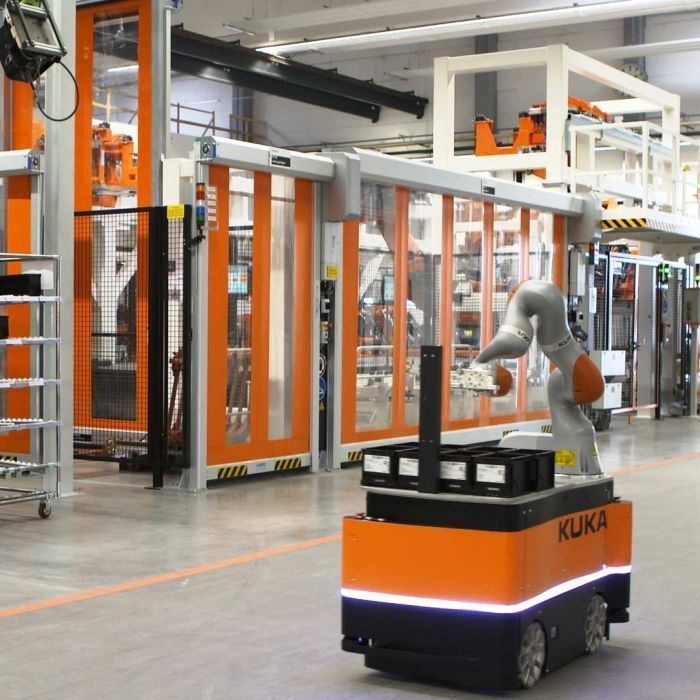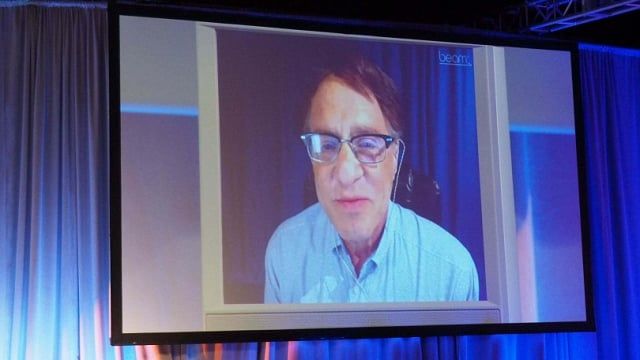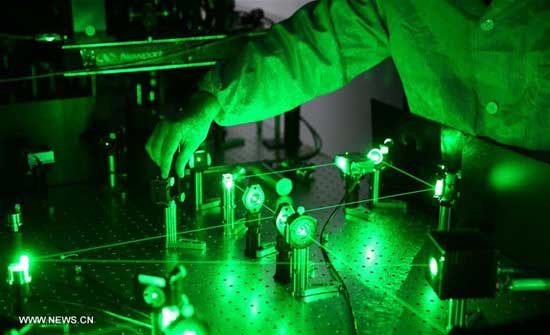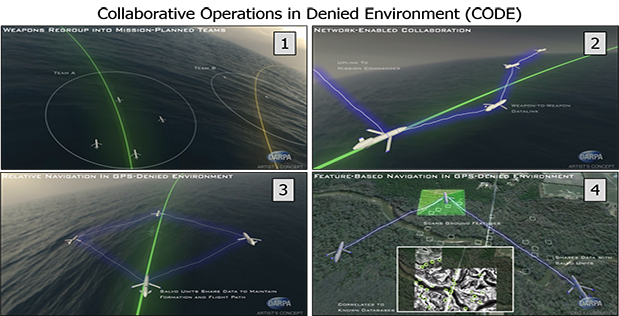Page 11119
Jun 7, 2016
China embarks on tech shopping spree for German robots and pianos
Posted by Karen Hurst in categories: business, economics, robotics/AI
China has been on a shopping tour of Germany, splurging on a string of key industrial companies in the past few weeks as Beijing moves to acquire the country’s fabled technological know-how and turn its own products into global brands.
But resistance to the offensive is growing following a 5 billion euro ($7.7 billion) bid last month by Chinese home appliance group Midea for leading German industrial robot maker Kuka.
The size of the play set alarm bells ringing across the business and political establishment of Europe’s biggest economy.
Continue reading “China embarks on tech shopping spree for German robots and pianos” »
Jun 7, 2016
Want to know what the future of medical invention looks like? Read on
Posted by Karen Hurst in categories: 3D printing, biotech/medical, business, computing, cyborgs, food, habitats, mobile phones, singularity, transportation, wearables
Medical/ Biocomputing will only continue to grow and advance as a result of the demand for more improved experiences by consumers and business in communications and entertainment, food, home life, travel, business, etc.
Today, we have seen early opportunities and benefits with 3D printing, BMI, early stage Gene/ Cell circuitry and computing. In the future, we will see these technologies more and more replaced by even more advance Biocomputing and gene circuitry technology that will ultimately transform the human experiences and quality of life that many like to call Singularity.
Printing technology has come a long way from screechy dot-matrix printers to 3D printers which can print real life objects from metals, plastics, chemicals and concrete. While, at first, 3D printers were being used to create just basic shapes with different materials, more recently, they have been used to create advanced electronics, bio-medical devices and even houses.
Aircraft manufacturer Airbus recently showcased the world’s first 3D-printed mini aircraft, Thor, at the International Aerospace Exhibition and Air Show in Berlin. Although Airbus and its competitor have been using 3D-printed parts for their bigger assemblies, recent attempt shows that aviation may be ready for a new future with much lighter and cheaper planes given 3D printing not only cuts down the costs with less wastage, it also makes the plane lighter, thereby making them faster and more fuel efficient. But planes and toys is not what 3D printing might be restricted to; though in the elementary stage at the moment, the technology is being used for creating complex electronics like phones and wearables and may be able to reduce costs for manufacturers like Samsung and Apple.
Continue reading “Want to know what the future of medical invention looks like? Read on” »
Jun 7, 2016
White House Challenges Artificial Intelligence Experts to Reduce Incarceration Rates
Posted by Karen Hurst in category: robotics/AI
A new twist on AI.
On Tuesday, June 7, the White House Office of Science and Technology Policy’s Lynn Overmann, who also leads the White House Police Data Initiative, stressed the severity of the nation’s incarceration crisis while asking a crowd of data scientists and artificial intelligence specialists for aid.
Jun 7, 2016
Google Proposes ‘Kill Switch’ For Rouge AIs
Posted by Karen Hurst in categories: Elon Musk, evolution, robotics/AI
More news on Google’s AI kill switch — I am glad that it exist.
Developers are pondering on methods to prevent catastrophe in case an Artificial Intelligence, or AI, got ahead of its designated programming.
Theoretical scientist Stephen Hawking, entrepreneur for Tesla Motors Elon Musk, and Microsoft co-founder Bill Gates mentioned that AIs have a high learning curve regarding self-awareness, and anytime soon, AIs might surpass human knowledge and become sentient. In a 2014 interview, theoretical physicist Stephen Hawking stated that the evolution of humans is slower compared to the rapid improvement of robots.
Continue reading “Google Proposes ‘Kill Switch’ For Rouge AIs” »
Jun 7, 2016
How Ray Kurzweil Sees the Future
Posted by Karen Hurst in categories: computing, engineering, Ray Kurzweil
The Kurzweil vision.
A Q&A with the top author, computer scientist, futurist, inventor, and Google engineering director.
Jun 7, 2016
The path to perfection: Quantum dots in electrically-controlled cavities yield bright, nearly identical photons
Posted by Karen Hurst in categories: particle physics, quantum physics
Nice.
Optica l quantum technologies are based on the interactions of atoms and photons at the single-particle level, and so require sources of single photons that are highly indistinguishable – that is, as identical as possible. Current single-photon sources using semiconductor quantum dots inserted into photonic structures produce photons that are ultrabright but have limited indistinguishability due to charge noise, which results in a fluctuating electric field. Conversely, parametric down conversion sources yield photons that while being highly indistinguishable have very low brightness. Recently, however, scientists at CNRS — Université Paris-Saclay, Marcoussis, France; Université Paris Diderot, Paris, France; University of Queensland, Brisbane, Australia; and Université Grenoble Alpes, CNRS, Institut Néel, Grenoble, France; have developed devices made of quantum dots in electrically-controlled cavities that provide large numbers of highly indistinguishable photons with strongly reduced charge noise that are 20 times brighter than any source of equal quality. The researchers state that by demonstrating efficient generation of a pure single photon with near-unity indistinguishability, their novel approach promises significant advances in optical quantum technology complexity and scalability.
Dr. Pascale Senellart and Phys.org discussed the paper, Near-optimal single-photon sources in the solid state, that she and her colleagues published in Nature Photonics, which reports the design and fabrication of the first optoelectronic devices made of quantum dots in electrically controlled cavities that provide bright source generating near-unity indistinguishability and pure single photons. “The ideal single photon source is a device that produces light pulses, each of them containing exactly one, and no more than one, photon. Moreover, all the photons should be identical in spatial shape, wavelength, polarization, and a spectrum that is the Fourier transform of its temporal profile,” Senellart tells Phys.org. “As a result, to obtain near optimal single photon sources in an optoelectronic device, we had to solve many scientific and technological challenges, leading to an achievement that is the result of more than seven years of research.”
Jun 7, 2016
China plans to set up global quantum communications network
Posted by Karen Hurst in categories: cybercrime/malcode, quantum physics, satellites
China is getting their new Quantum communications infrastructure being prepped for deployment and adoption. Next month, the Quantum Satellite is launched to enable wireless communication that is secured and can block hacking; and we know what the reverse means for everyone else.
Now, China has unveiled that they have been planning and getting their cities ready for Quantum communications/ network adoption.
China leads the world in quantum communications.
Continue reading “China plans to set up global quantum communications network” »
Jun 7, 2016
Water Has An Amazing Fourth State — Ice, Steam, Liquid, And Now Tunneling
Posted by Karen Hurst in category: futurism
Researchers have found that water has a bizarre fourth state. In addition to the familiar states of liquid, ice, and steam, with their transition points marked by the familiar freezing and boiling points on the Kelvin and Celsius scales, water has a fourth state, tunneling.
[S]cientists at the Oak Ridge National Lab (ORNL) have discovered that when it’s put under extreme pressure in small spaces, the life-giving liquid can exhibit a strange fourth state known as tunneling.
A Fourth State of #Water Discovered – https://t.co/ue5hLbawGX pic.twitter.com/Zzp5XwJNEI
Continue reading “Water Has An Amazing Fourth State — Ice, Steam, Liquid, And Now Tunneling” »
Jun 7, 2016
CODE Takes Next Steps toward More Sophisticated, Resilient, and Collaborative Unmanned Air Systems
Posted by Karen Hurst in categories: robotics/AI, transportation
Nice.
CODE’s main objective is to develop and demonstrate the value of collaborative autonomy, in which UASs could perform sophisticated tasks both individually and in teams under the supervision of a single human mission commander. CODE-equipped UASs would perform their mission by sharing data, negotiating assignments, and synchronizing actions and communications among team members and with the commander. CODE’s modular open software architecture on board the UASs would enable multiple CODE-equipped unmanned aircraft to navigate to their destinations and find, track, identify, and engage targets under established rules of engagement. The UASs could also recruit other CODE-equipped UASs from nearby friendly forces to augment their own capabilities and adapt to dynamic situations such as attrition of friendly forces or the emergence of unanticipated threats.
“During Phase 1, we successfully demonstrated, in simulation, the potential value of collaborative autonomy among UASs at the tactical edge, and worked with our performers to draft transition plans for possible future operational systems,” said Jean-Charles Ledé, DARPA program manager. “Between the two teams, we have selected about 20 autonomous behaviors that would greatly increase the mission capabilities of our legacy UASs and enable them to perform complex missions in denied or contested environments in which communications, navigation, and other critical elements of the targeting chain are compromised. We have also made excellent progress in the human-system interface and open-architecture framework.”

















